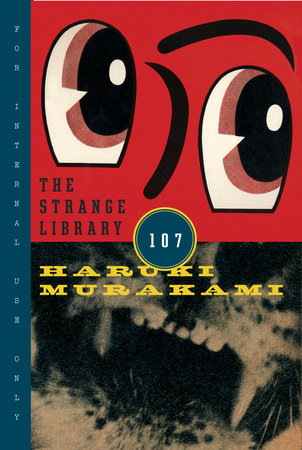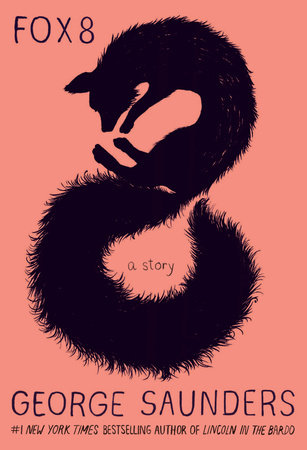
Murakami vs. Saunders: Magical Book Design
- Posted by Augur Blog
- On February 15, 2019
- 0 Comments
- book cover design, george saunders, haruki murakami


On the surface, a story about a library prison escape and the tale of an anthropomorphic fox rendered homeless could not be more different. But both of these short stories—The Strange Library by Haruki Murakami and Fox 8 by George Saunders—have been published as standalone books with illustrations (adult picture books, if you will). This unique format has both enriched the fantastical elements of these stories and complicated their genre classification.
Murakami’s beautifully eerie short story, The Strange Library, has been published as an illustrated standalone book by several publishers, with different translators and illustrators. The US edition is designed by Chip Kidd, whose illustrations perfectly complement the story of a boy who becomes imprisoned in the basement of a library after trying to locate a book on tax collection in the Ottoman Empire.
The book cover is comprised of two flaps that, when lifted up, reveal illustrations of a black creature’s bright green eye and a set of smiling upside down lips. These images both literally and figuratively frame the story, and the artwork throughout the story adds another dimension to the storytelling. The geometric starling on the green eye, the new moon that “will shape our destinies,” the violet-tinted girl with dysfunctional vocal cords—they help to immerse the reader in this fantastical, horrific world.
The Strange Library is rife with surprise, and one of the biggest surprises came after reading, when I found the book classified as a children’s novella on Wikipedia. Goodreads described it as a “book for all ages,” and my local library shelved it with the rest of Murakami’s novels in the adult fiction section.
An illustrated short story being mistaken for a picture book doesn’t seem completely outlandish, but the haunting world, the dialogue, the illustrations, all create a darkly complex tale that seemed to me clearly intended for older readers. Here are the final words of the story, printed in a small font as though an afterthought:
“I lie here by myself in the dark at two o’clock in the morning and think about that cell in the library basement. About how it feels to be alone, and the depth of the darkness surrounding me. Darkness as pitch black as the night of the new moon.”
I thought the illustrations would complicate the story’s classification as a juvenile or adult fiction, but Saunders’s illustrated standalone novella, Fox 8, does not face the same issue. The book, which is about a fox who learns English and tries to find food after his home is turned into a mall, is clearly defined as a satirical short story by Wikipedia, Goodreads, and other review sites.
The illustrations by Chelsea Cardinal are mostly black and white sketches of foxes in different terrains—much simpler and more realistic than those of Kidd’s. Saunders’s diction is also simpler than Murakami’s. If anything, I thought Fox 8 would be classified as juvenile. And while both contain fantastical elements, Fox 8 was grounded in a world more like ours, and I wonder if this difference accounted for the story’s straightforward classification.
In an interview about his career as a children’s book author, Maurice Sendak said, “I don’t write for children. I write, and somebody says, ‘That’s for children.’” Growing up with Aesop’s Fables and later studying The Great Gatsby in high school English, we’re quick to assume that the less realistic a story, the more childlike it is.
But the realistic elements of Fox 8—the titular character’s brutal encounter with humans at the mall, his subsequent hunger and fate—are what
At the same time, the surreal elements of The Strange Library amplify the boy’s loneliness and the library’s soullessness, creating a story that perhaps wasn’t written for children, but that somebody decided was.




0 Comments